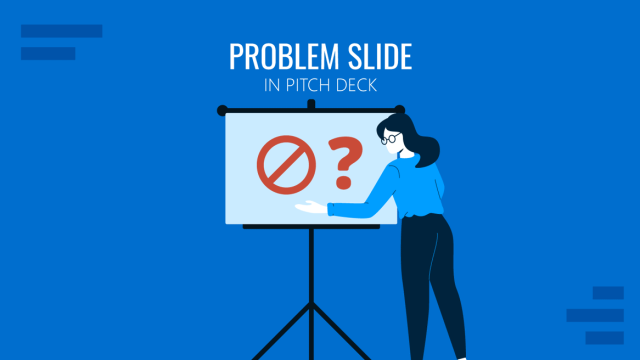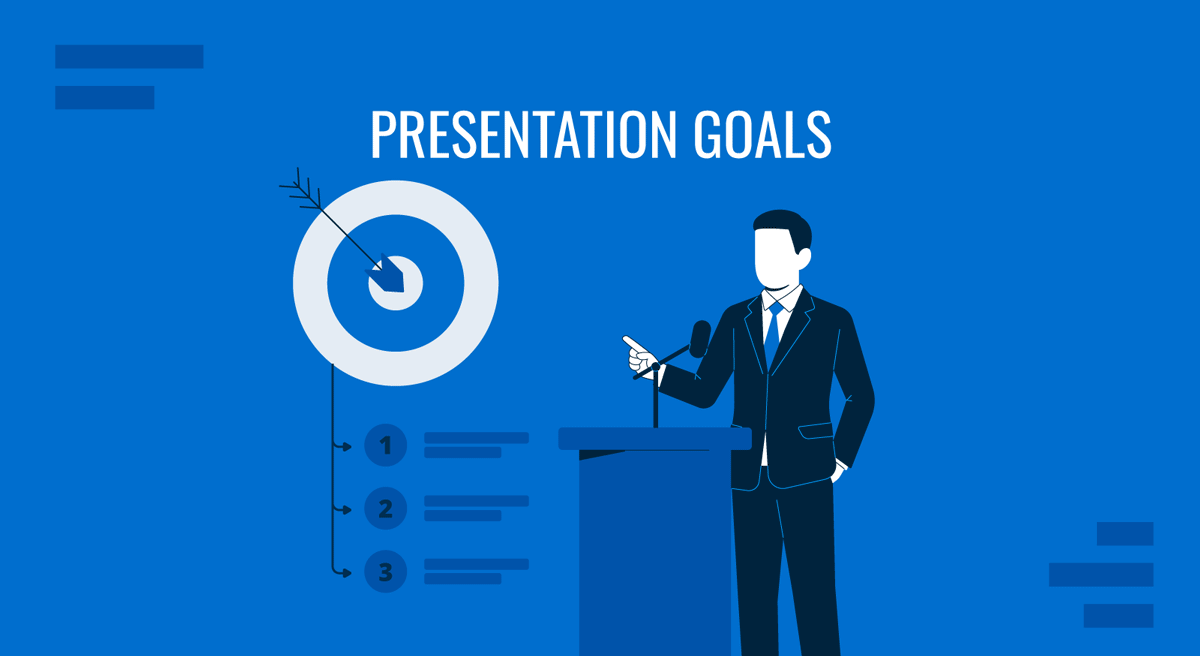
Every presentation, regardless of length or topic, begins with a purpose. Presentation goals define why the presenter is speaking, what change they aim to bring about in the audience, and how success will be measured once the presentation concludes. Without a goal, even the most polished visuals or confident delivery become directionless. Presentation goals are not decorative statements added to a brief; they are the foundation of clarity, consistency, and persuasion.
This article examines how to define, structure, and measure presentation goals from the presenter’s point of view. It offers a practical framework for transforming abstract intentions into tangible results: whether that means gaining approval for a project, educating a team, closing a deal, or motivating action.
Table of Contents
- What are Presentation Goals?
- Why Defining Presentation Goals Matters?
- Types of Presentation Goals
- How to Set Effective Presentation Goals
- Aligning Presentation Goals with Audience Expectations
- From Presentation Goals to Slide Design
- Common Mistakes When Defining Presentation Goals
- FAQs
- Final Words
What are Presentation Goals?
We call a presentation goal the intended outcome a presenter aims to achieve in their audience’s perception, understanding, or behavior. It’s a recipe for what success looks like, and it depends entirely on the metrics considered. For some presenters, successful presentation goals equal understanding a new process. For others, securing funding, aligning stakeholders, or shifting beliefs.
Goals are not strictly linked to external outcomes; they can also guide internal decisions, such as the tone of voice, slide sequence, level of technical detail, and visual emphasis in presentations. Think of presentation goals as the driving force behind a presentation structure and visual communication efforts.
Understanding presentation goals also requires acknowledging their dynamic nature. Goals evolve with context: a quarterly review aims to inform; a product pitch seeks to persuade. What remains constant is the presenter’s responsibility to communicate with precision and clarity.
Why Defining Presentation Goals Matters?
From a presenter’s standpoint, the goal of the presentation functions as a compass. It influences not only what is said but how it is said. Without a goal, a presentation can appear polished yet purposeless. Defining one ensures alignment between intention and perception.
A clear goal anchors confidence. When presenters know their objective, they speak with conviction. In contrast, the lack of objectives is visible from the speaker’s body language.
A well-defined goal eliminates that anxiety. It allows them to control pacing, prioritize arguments, and end a presentation decisively.
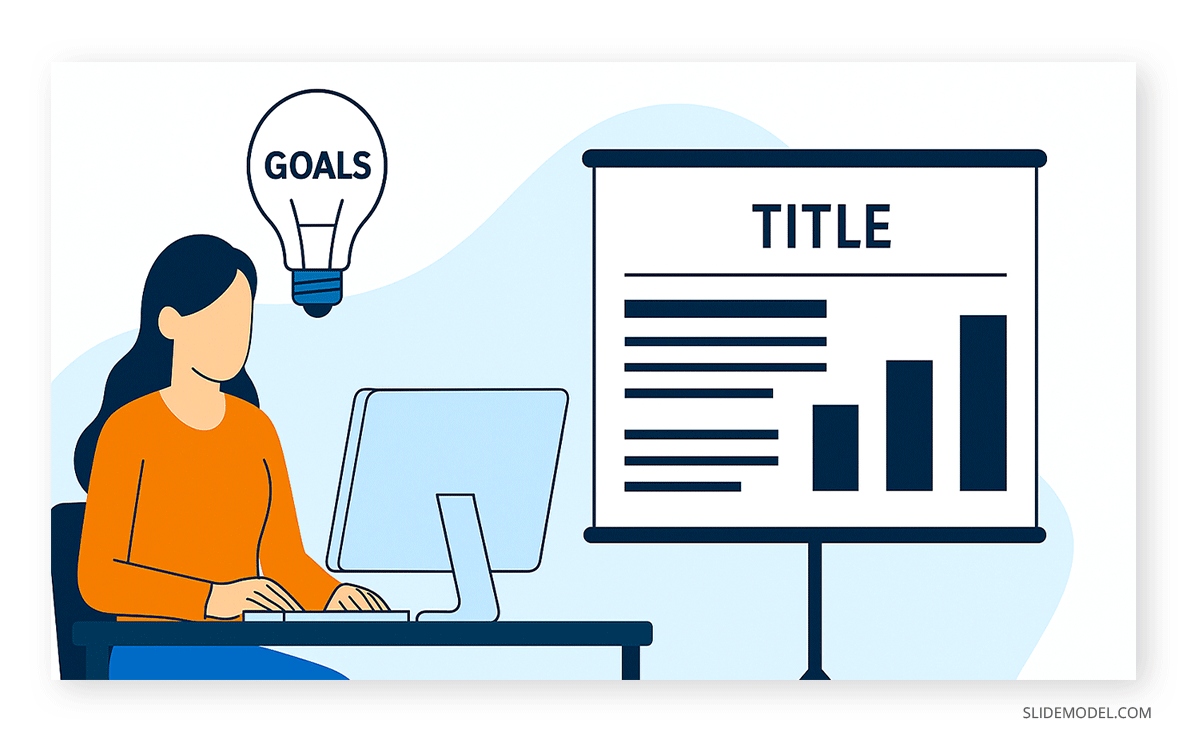
Goals also shape structure. A persuasive presentation employs tension and resolution, highlighting a problem, proposing a solution, and reinforcing its value. An instructional presentation, by contrast, relies on sequential explanation and demonstration. Without clarity on the goal, presenters often mix these modes, creating cognitive dissonance for the audience.
Types of Presentation Goals
Most presentation goals fall into five functional categories: informational, instructional, persuasive, motivational, and decision-driving. Understanding which category applies helps presenters craft structure and tone that match intent.
Informational Goals
Informational goals aim to increase understanding. Examples include quarterly updates, research findings, or project briefings. The presenter’s success depends on clarity and organization. The focus lies in accurate communication, not persuasion.
Instructional Goals
They extend beyond information, encompassing both comprehension and capability. Training presentations and product demos fit this presentation goal type. Slides must sequence information logically, balancing explanation with demonstration. Success is achieved when the audience can reproduce the task or process afterward.
Persuasive Goals
Persuasive goals are designed to change opinions or beliefs. Sales pitches and investor pitch presentations belong here. The presenter must construct a logical argument that is supported by both data and narrative coherence. Success is measured by agreement or commitment.
Motivational Goals
These goals target emotion and morale. Leadership presentations, vision statements, or internal alignment meetings often aim for this goal. The content may overlap with persuasion, but the emphasis shifts toward inspiration and unity rather than decision-making.
Decision-Driving Goals
Finally, decision-driving goals require the audience to take action: approve funding, adopt a policy, or cast a vote. The presenter’s role is to clarify trade-offs, anticipate objections, and provide enough evidence for informed action.
How to Set Effective Presentation Goals
Establishing goals begins with introspection, not slides. Before opening presentation software, the presenter should answer three questions:
- What do I want the audience to know, feel, or do after this presentation?
- Why does it matter now?
- How will I know I succeeded?
Each answer narrows the focus. For example, if the goal is to convince a board to allocate funds, the metric is clear: budget approval. If the goal is to inform about a new internal policy, comprehension and adherence are key indicators of success.
Practical goals share four qualities: specificity, relevance, measurability, and feasibility, as seen in the SMART Goal Framework. “Increase awareness of our sustainability initiative” is broad. “Ensure 80% of department heads can summarize our sustainability goals by next week” is actionable.
A presenter also needs to consider context. The same message framed for executives differs from one aimed at field employees. At the same time, the underlying objective may remain constant, the tone, vocabulary, and data depth shift accordingly.
Aligning Presentation Goals with Audience Expectations
A presentation only succeeds if the audience interprets it as intended. Alignment between the presenter’s goal and the audience’s expectation is where strategy meets empathy.
The first step is understanding what the audience values. Executives want efficiency and outcomes; engineers crave technical detail; clients seek reliability and a return on investment. A presenter must therefore calibrate both content and emphasis to match these priorities.
Consider a data analyst explaining quarterly performance to a marketing team. If her goal is to encourage data-driven decision-making, success depends on showing practical relevance rather than statistical precision. Conversely, when addressing finance executives, precision may take precedence. The goal remains constant, but the expression adapts.
Failure to align results in disengagement. An audience sensing irrelevance mentally withdraws, no matter how polished the design. When the presentation goal intersects with the audience’s motivation, attention is retained effortlessly.
In practice, alignment influences everything from data density to pacing. Presenters should always review slides through the audience’s eyes: Does each element advance their understanding or decision? If not, it can be simplified or removed.
From Presentation Goals to Slide Design
Once goals are defined, they must be visible in the structure of the deck. Slides are not neutral; they visually express intent. The relationship between a presentation’s goal and its design determines whether the audience perceives coherence or confusion.
A presenter aiming to inform should prioritize legibility, hierarchy, and white space. Minimal text, concise charts, and consistent labeling communicate respect for the audience’s processing time. Each slide should isolate one concept and visually reinforce understanding through alignment and color contrast.
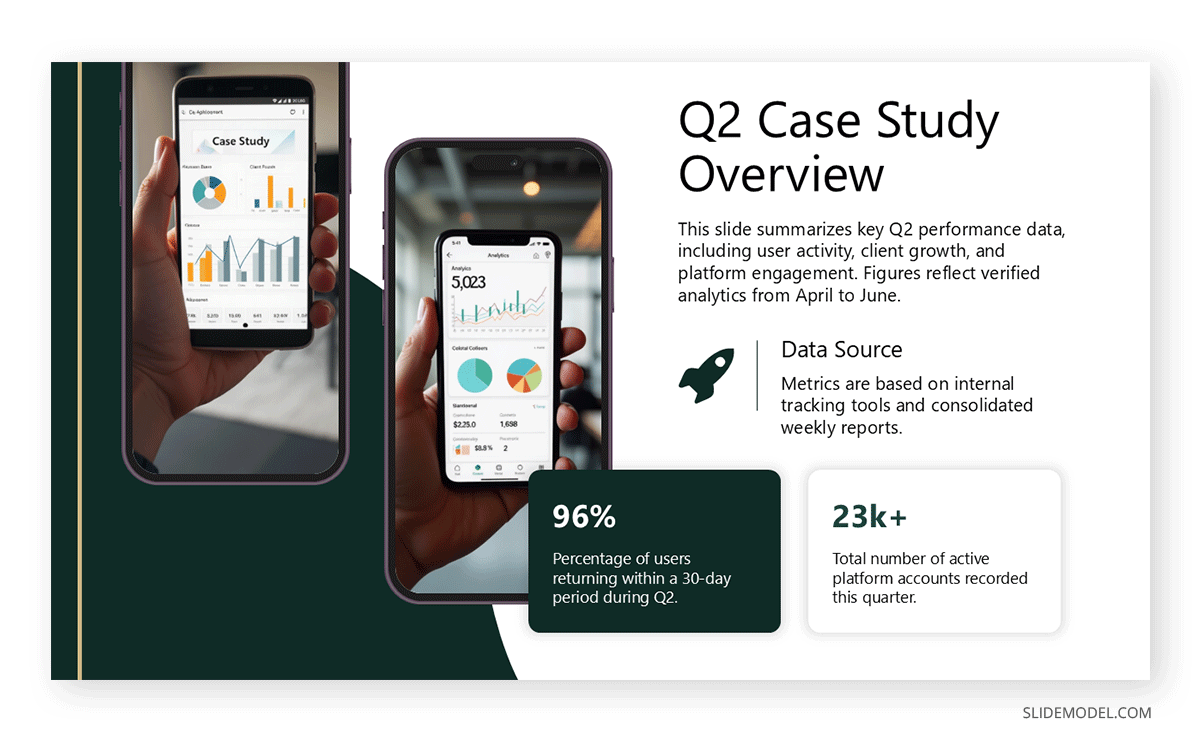
When the goal is persuasion, design must guide attention toward logical progression. Visual metaphors such as roadmaps or funnels illustrate transformation and growth. Emphasis on benefits rather than features becomes critical. For example, a timeline slide showing increasing adoption or revenue communicates the trajectory more effectively than a table of figures.
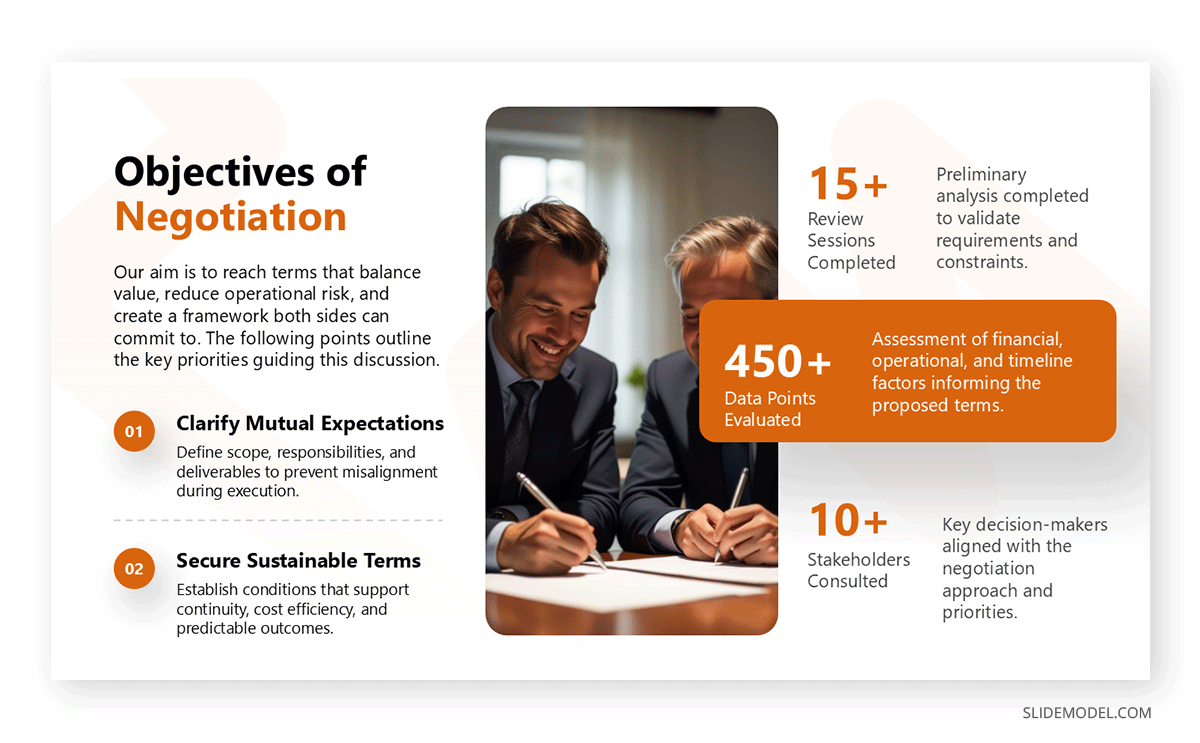
Motivational goals benefit from imagery and typography that evoke emotion, such as authentic photographs, confident color palettes, and dynamic composition. The presenter’s voice and expression carry equal weight here; design merely amplifies.

For decision-driving presentations, clarity is paramount. Use visual hierarchies to distinguish between facts, implications, and recommendations. Supporting slides should back each claim with concise evidence, avoiding unnecessary decoration.
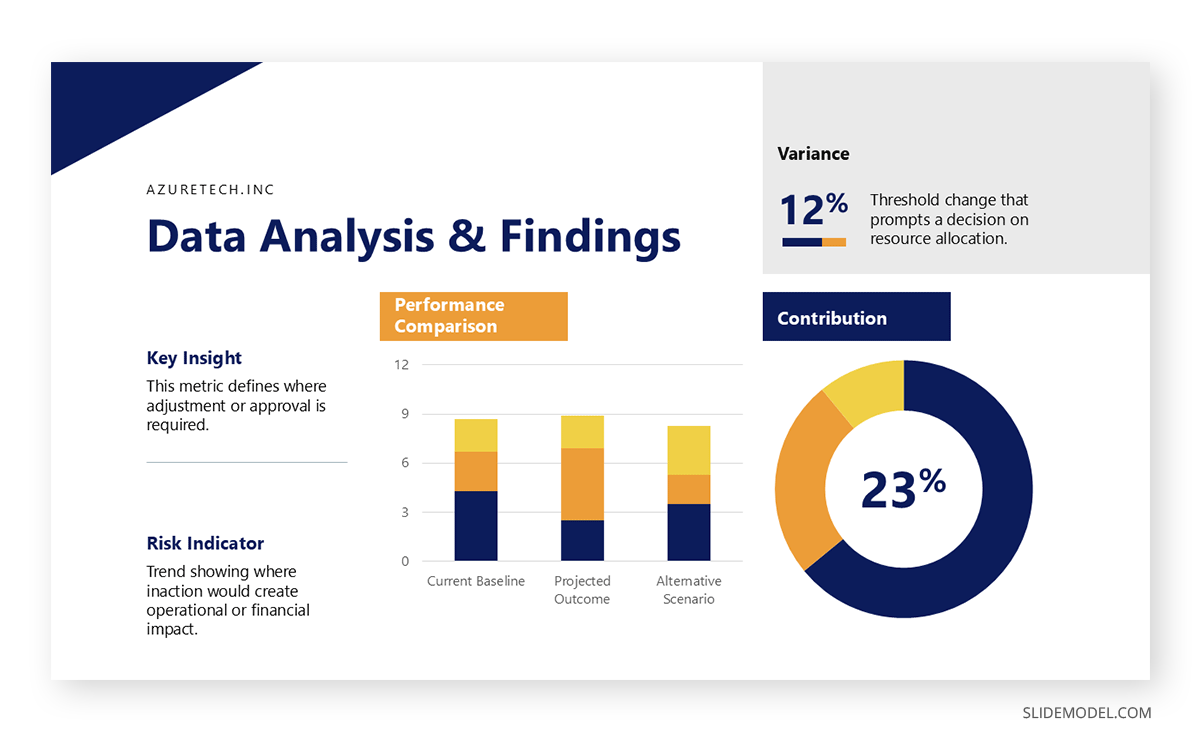
Common Mistakes When Defining Presentation Goals
Vague or Overly Broad Objectives
The most frequent error occurs when presenters define goals so general that they lose operational meaning. Statements like “communicate project status” or “promote awareness” lack direction. They neither specify desired outcomes nor guide slide content. A better approach is to articulate measurable change: “Inform stakeholders of current progress and obtain feedback for Phase 2 approval.”
Conflicting Goals Within the Same Deck
Attempting to persuade, educate, and entertain simultaneously confuses the narrative. Each presentation should have a dominant purpose. Secondary intentions are acceptable but must support, not contradict, the main objective.
Neglecting Contextual Relevance
Presenters often reuse slides from other settings without adapting them to the current audience. This shortcut creates misalignment between the message and expectation. Goals should be re-evaluated each time the presentation is delivered.
Overestimating Audience Commitment
Ambitious goals that assume too much from listeners, such as expecting a decision on first exposure, can backfire. Realistic incremental goals, such as securing an agreement for a follow-up meeting, demonstrate awareness of professional processes.
Disconnect Between Verbal and Visual Messaging
The inconsistent tone between the spoken explanation and the on-screen content weakens the impact. If the visual narrative suggests optimism while the verbal message emphasizes caution, credibility suffers. Goal coherence requires harmony across all communication layers.
FAQs
How many goals should a presentation have?
Ideally, one primary goal and one or two secondary goals that support it. More than that, risks diffusion of focus and inconsistency in structure.
What if audience priorities shift mid-presentation?
Adapt in real time. Reframe the discussion to focus on shared outcomes without compromising your primary objective. Skilled presenters monitor verbal and nonverbal cues to adjust emphasis.
Can goals differ between in-person and virtual formats?
Yes. In virtual settings, engagement itself becomes a sub-goal. Design decisions such as slide pacing or interactive polls should support sustained attention.
Should goals be shared with the audience?
When appropriate, yes. Explicitly stating intent: “My goal today is to help you decide whether to proceed with Phase 2”. This clarifies expectations and guides interpretation.
What if a goal is only partially achieved?
Partial success still provides insight. Analyze which parts resonated and which did not. Adjust framing, evidence, or pacing for future iterations.
Do presentation goals differ by culture or region?
Cultural norms affect how authority, persuasion, and feedback are perceived. Adapt tone and formality while maintaining the core goal.
Should design teams be informed of presentation goals before creating visuals?
Absolutely. Designers translate abstract objectives into visual form. Without understanding the presenter’s intent, design becomes ornamental rather than functional.
How can presenters ensure goal alignment when collaborating with multiple speakers?
Start with a unified objective statement and divide content accordingly. Each segment should contribute a distinct element toward the shared goal.
What metrics can be used to measure success beyond immediate response?
Follow-up engagement, retention, post-event actions, or secondary discussions often reveal more profound impact than initial applause.
When should presentation goals be revisited?
Before every major revision or new audience delivery, context changes frequently, and relevance must be maintained.
Final Words
Defining presentation goals transforms communication from a performance to a strategic approach. A well-structured deck is not a random assembly of visuals; it is the physical manifestation of intent. Every transition, color, and word reflects purpose.
For presenters, goal-orientation represents maturity. It distinguishes those who deliver slides from those who influence outcomes. A goal clarifies not only what to say but what to omit. It disciplines creativity, ensuring that design and message converge toward measurable change.
